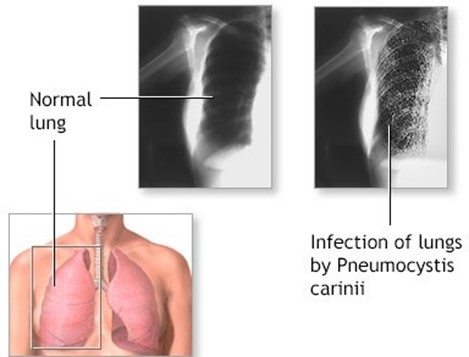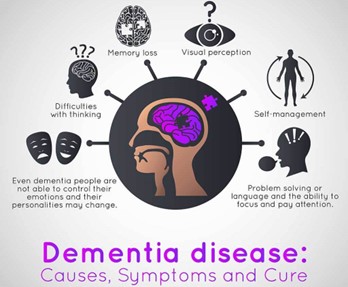A client is hospitalized with Pneumocystis carinii pneumonia. The nurse notes that the client has had no visitors, seems withdrawn, avoids eye contact and refuses to take part in conversation. In a loud, angry voice the client demands that the nurse leave the room. The nurse formulates a diagnosis of Social isolation. Based on this diagnosis, what is an appropriate goal of care for the client? Select one answer
Identifying one way to increase social interaction
Returning a demonstration of measures that can increase independence
Identifying at least one factor contributing to altered sexuality paterns
Reporting increased adaptation to changes in health status
The Correct Answer is D
Choice A reason: Symptoms are subjective data that are reported by the client, such as pain, nausea, or fatigue. They are not observable or measurable by the nurse, and they may vary depending on the client’s perception or expression. The data that the PN discovered are not symptoms, but objective data that are observed or measured by the nurse, such as skin condition, oral mucus membranes, and temperature. Therefore, this choice is incorrect.
Choice B reason: Urinary retention is a condition in which the client is unable to empty the bladder completely or at all. It can cause symptoms such as difficulty or pain in urinating, frequent or urgent urination, or abdominal distension. It can also lead to complications such as infection, kidney damage, or bladder rupture. The data that the PN discovered are not related to urinary retention, but to dehydration or fever. Therefore, this choice is incorrect.
Choice C reason: Signs of fluid overload are objective data that indicate excess fluid in the body, such as edema, weight gain, crackles in the lungs, or elevated blood pressure. They can result from conditions such as heart failure,
kidney failure, or liver cirrhosis. The data that the PN discovered are not signs of fluid overload, but signs of fluid deficit or heat stroke. Therefore, this choice is incorrect.
Choice D reason: Data clustering is a process of grouping related data together to form a meaningful patern that can support a nursing diagnosis. It can help the nurse to identify the client’s problems, needs, or risks, and to prioritize and plan interventions accordingly. The data that the PN discovered are an example of data clustering, as they represent a patern of signs that indicate a possible problem such as dehydration or fever. Therefore, this choice is correct.

Nursing Test Bank
Naxlex Comprehensive Predictor Exams
Related Questions
Correct Answer is D
Explanation
D) “I understand that you would like some ice cream, but I need you to be more respectful when you ask me for something.” This is an assertive response because it acknowledges the patient’s request, expresses the nurse’s feelings, and sets a clear boundary for acceptable behavior. Assertiveness is the ability to communicate one’s needs, opinions, and feelings in a respectful and confident manner.
“You are hungry and want a snack. I can do that in 10 minutes when I finish my rounds.” is incorrect. This is a passive response because it does not address the patient’s rudeness or assert the nurse’s rights. Passive communication is the tendency to avoid conflict, suppress one’s feelings, and comply with others’ demands.
“Maybe I can get one of the aides to bring you something in a while.” is incorrect. This is an evasive response because it does not commit to fulfilling the patient’s request or confronting the patient’s attitude. Evasive communication is the tendency to avoid responsibility, give vague answers, and shift blame to others.
“Call the nursing station and ask them to have the kitchen bring whatever you want.” is incorrect. This is an aggressive response because it rejects the patient’s request, shows irritation, and implies that the nurse does not care about the patient’s needs. Aggressive communication is the tendency to dominate, criticize, and blame others.
Correct Answer is ["A"]
Explanation
Choice A reason: This is correct because it shows that the PN is respectful and sensitive to the client’s cognitive impairment. Long explanations can confuse and overwhelm the client, who may have difficulty processing and retaining information.
Choice B reason: This is correct because it shows that the PN is respectful and sensitive to the client’s cognitive impairment. Asking one question at a time can help the client focus and respond more easily, without feeling pressured or frustrated.
Choice C reason: This is correct because it shows that the PN is respectful and sensitive to the client’s cognitive impairment. Using short sentences can help the client understand and remember the message, without being distracted or confused by unnecessary words.
Choice D reason: This is incorrect because it shows that the PN is rude and disrespectful to the client’s hearing ability. Talking loudly can make the client feel annoyed or threatened, and may not improve communication if the client has hearing loss. The PN should talk in a normal tone and check for understanding.

Whether you are a student looking to ace your exams or a practicing nurse seeking to enhance your expertise , our nursing education contents will empower you with the confidence and competence to make a difference in the lives of patients and become a respected leader in the healthcare field.
Visit Naxlex, invest in your future and unlock endless possibilities with our unparalleled nursing education contents today
Report Wrong Answer on the Current Question
Do you disagree with the answer? If yes, what is your expected answer? Explain.
Kindly be descriptive with the issue you are facing.
